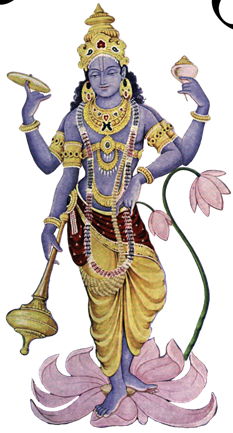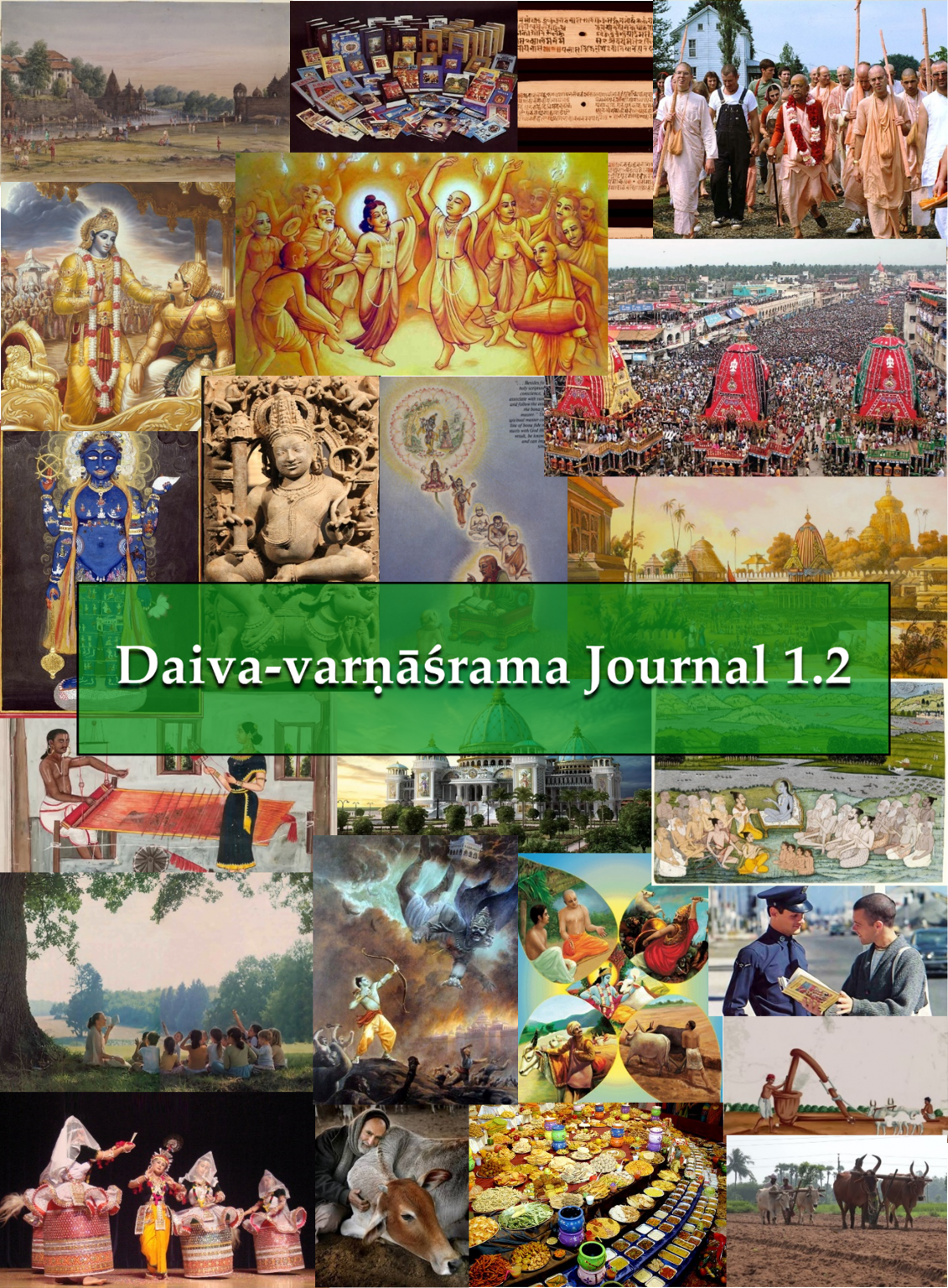Daiva-Varṇāśrama Journal
Volume One, Number Two
The Daiva-Varṇāśrama Journal presents the various aspects of a culture that is organized into varṇas and āśramas for the purpose of performing saṅkīrtana–yajña or service to Viṣṇu/Kṛṣṇa.
The basic concept is that such a culture is based on an agrarian economy, which is the foundation of traditional Vaiṣṇava life.
Śrīla Prabhupāda described daiva-varṇāśrama as an unfinished 50% of his mission. And that remaining 50% extends the movement to engage the rest of society—that is, the hundreds of millions who are not brāhmaṇas.
He explained: “For large scale, varṇāśrama is required. Currently, ISKCON is small scale. Very insignificant. But if you want to make the whole human society perfect, then this Kṛṣṇa consciousness movement should be introduced according to Kṛṣṇa’s instruction (cātur-varṇyaṁ mayā sṛiṣṭam—BG 4.13). Now we are recruiting a small part of society, the best, the brāhmaṇas. But Caitanya Mahāprabhu said para-upakāra. Why should only a certain section be recruited? Para-upakāra means for the benefit of the masses.
“Thus, we must introduce varṇāśrama-dharma. It must be done perfectly. It is possible and the people will be happy.” Feb 14, 1977, conversation, edited for clarity.
Due to unforeseen circumstances, this is the last issue of the journal.
Your servants, the editors
Click on a title below to open the full article. The entire journal is here, available in 18 languages.
Vaishnava environmental activism is not just an aspect of Krishna consciousness. It casts a wide net and is essential for recruiting large numbers to Mahāprabhu’s movement.
First edit–600 words (2-3 minute read) by Dayānanda dāsa.
Maharaja writes, “Considering that the Kṛṣṇa consciousness movement is endeavoring to spread Gauḍīya Vaiṣṇava culture throughout the world, I realized how fortunate I was to be one of the few Western devotees to learn about it firsthand [in Bangladesh].”
3500 words (14 minute read) by Bhakti Vikas Swami
Devotees should not wait for or expect social chaos to enhance the varṇāśrama movement. This article addresses some common misunderstandings about social chaos and food production. Click title for article.
3500 words (14 minute read)–by Dayānanda dāsa.
Vedic Vaiṣṇava Villages – Beginner’s Guide to Simple Living and High Thinking explains 1) the importance of villages, 2) the principles of self-sufficiency, 3) the rural basis of Vedic culture, and 4) the steps to establish self-sufficient communities.
4,700 words (19 minute read) by Bhakti Raghava Swami
This article contains questions and answers that pertain mostly to women’s roles in daiva-varṇāśrama society. They have become a primary issue in the implementation of varṇāśrama by some followers of Prabhupāda.
2500 words (10 minute read) by Dayānanda dāsa
Prabhupada did not like the word Hinduism. Instead, he described the religion as varṇāśrama-dharma. Thus, it could be argued that the second half of Śrīla Prabhupāda’s movement is actually a revival of Hinduism (varṇāśrama-dharma).
2000 words (14 minute read) by Dayānanda dāsa
In the sense that the daiva-varṇāśrama movement is meant for the masses, it is meant for the śūdras. Thus, the brāhmaṇas and others must ensure that śūdras have adequate Kṛṣṇa conscious sense gratification and sufficient work (engagement).
2500 words (15 minute read)–by Dayānanda dāsa
In today’s world, self-satisfaction is difficult to understand, what to speak of achieve. This article describes how people in daiva-varṇāśrama society are more satisfied than those in modern materialistic society.
2300 words (9 minute read)–by Dayānanda dāsa
A few years ago, ISKCON officials in North America presented their objections to daiva-varṇāśrama-dharma. We briefly address their mistaken ideas here.
1100 words (5 min read)–by Dayānanda dāsa
Bios of the contributors: Bhakti Rāghava Swami, Bhakti Vikāsa Swami, and Dayānanda dāsa.

